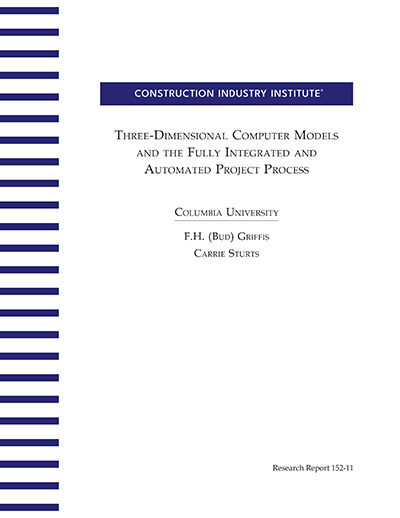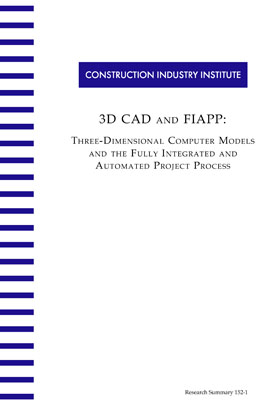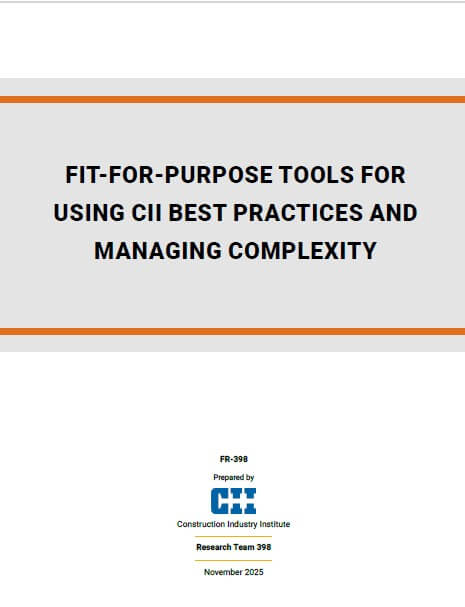
Three-Dimensional Computer Models and the Fully Integrated and Automated Project Process for the Management of Construction
The purpose of this research is to establish and document the state-of-the-art, develop procedures that will begin to develop a fully integrated and automated system for managing construction project processes. We define the three-dimensional computer model as it relates to the fully integrated and automated project process, develop methods to utilize the existing technology, and suggest new technology for the support of construction operations.
CII Research Team 152’s specific objectives were to:
- Determine the state-of-the-art in integrating and automating construction processes.
- Evaluate 3D CADD construction and commissioning information systems for process and information integration capability.
- Develop procedures based on a case-study project for relating the input and output from the integrated information system to other segments of the overall process based on an actual project.
- Integrate the best ideas into a process manual for the industry.
Today, databases can be seamlessly integrated so that the line between computer graphics and associated data is blurred. We define the three-dimensional computer model as the graphical and geometric data and distinguish this model from its associated databases. The associated databases are an equally important part of the design and construction software systems. Associated databases add valuable dimensions and functionality to the three-dimensional computer models. Associated databases can include information from P&IDs, estimation, scheduling, materials management, budget and cost projection and tracking, etc., and they enable automation and integration between different software packages and systems.
In this document, RT-152 discussed the applications of the three-dimensional computer models and their associated databases in each of the following phases of the project as defined by CII in its 1997 report, Determining the Impacts of Process Change on the EPC Process:
- The pre-project planning phase
- The design phase
- The materials management phase
- The construction phase
- The start-up phase
The team proposes that the three-dimensional computer model serve as an organizational and reference tool throughout the project process. The project information is organized and linked in terms of the design objects and can be accessed through the graphical three-dimensional computer model interface. Since the ideal system is automated and integrated, any change to a database is reflected throughout the system. Consequently, every project participant will have access to the most current data, and RT-152 suggests that these data be linked and arranged according to components or sections in the model.
Focusing on industrial, process, and power, the report found that there is much variability in the capabilities and willingness of construction companies to integrate 3D CAD with other systems. This can be affected by owner requirements, in-house engineering capabilities, engineering firm alliances, or other contractual bid positions and/or terms.
It was found that sophistication evolves as project team members use this technology on more and more projects. However, if adoption is viewed as a track or trend, it would look something like the figure presented here:
Generally, when an organization begins using a three-dimensional computer model and associated databases on the construction site, its use will be limited. As the project teams gain experience, the usage increases and the process becomes more efficient and integrated. It will become apparent as the industries use three-dimensional computer models, which projects benefit most from this integration and automation technology.
(RR152-11, p. 3-1)
Ultimately, it was conceded that few, if any, construction organizations were using most of the concepts presented as current “state of the practice,” but many had adopted components. The trend and prediction was for increasing adoption of these tools and integrations.
Refer to “On the Horizon” epilogue on page 3-25 of Research Report (RR152-11) for a detailed list of needed functions that were as of yet part of the “state of the practice.”(RR152-11, p. 3-6)



